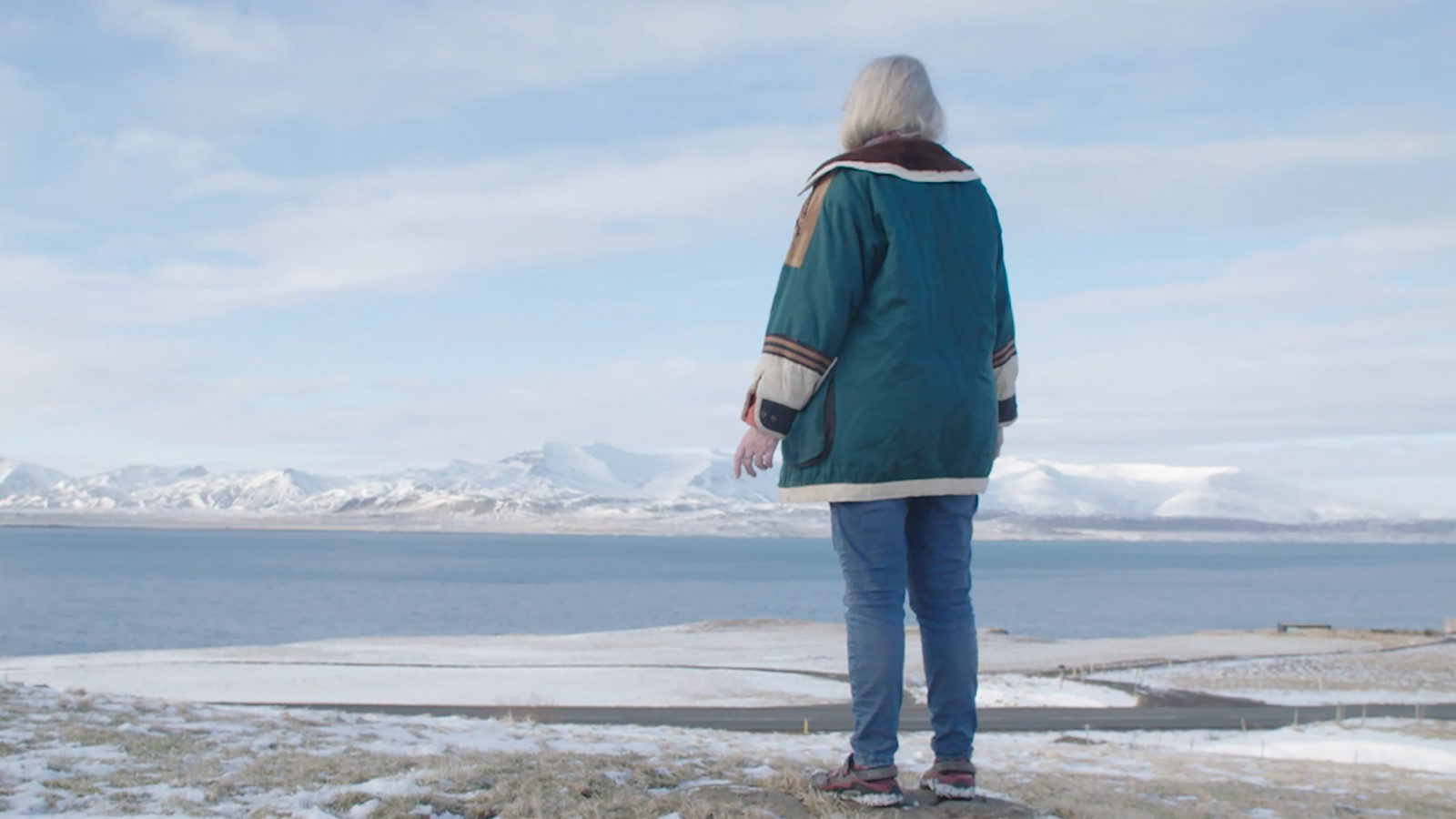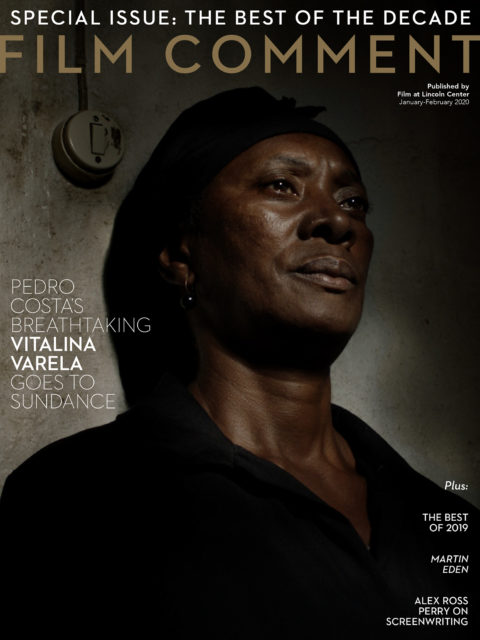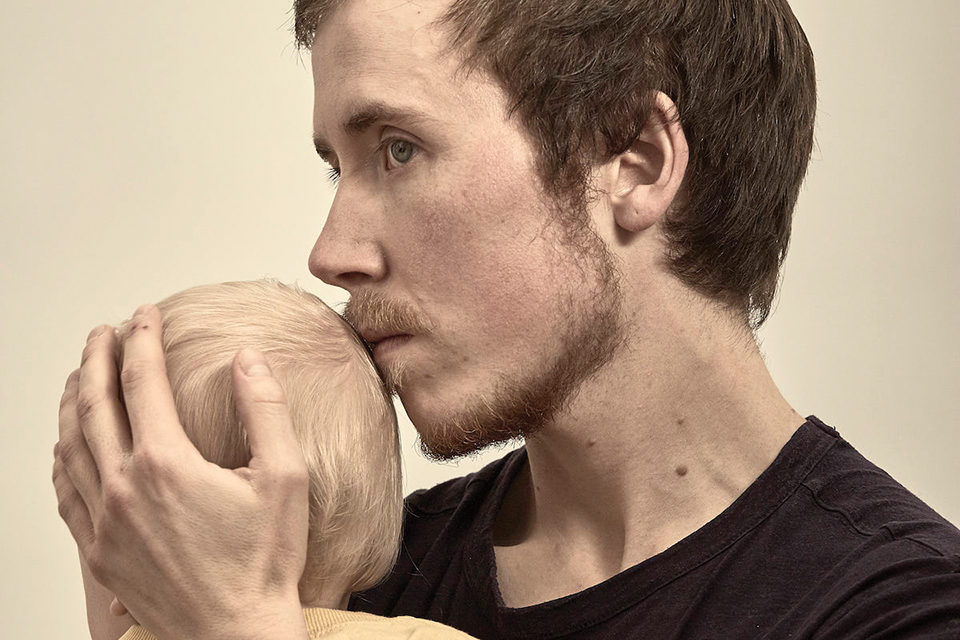By Eric Hynes in the January-February 2020 Issue

Embracing Entropy
Complexity is truth in three unreleased films that our nonfiction critic ranks among the year’s best
There’s a tendency among recent documentaries to start with what’s effectively an embedded trailer: two minutes of montage, scored to urgent music, tantalizing the audience with what’s to come. Instead of an introductory scene, or credit sequence, or a cold open, the beginning of the movie is really just hard-sell marketing for the rest of the movie. The practice is familiar—so much so that many of these beginnings are beat-by-beat identical—but I remain dismayed that a work of art would apportion itself this way. The tendency speaks from a place of fear and insecurity (doubtlessly heightened in this era of fickle streaming habits) over whether the viewer will continue watching. The fear may be real, but need that fear shape or, in a limited sense, become the work itself? It’s like putting the book-jacket copy onto the first page of the novel.

From the January-February 2020 Issue
Also in this issue
Yet as with a novel, or a work of long-form nonfiction, audience engagement is rarely determined by the oversharing of what’s to come. Rather, our interest is stoked by intangibles around form, tone, language, and voice—i.e., artistic choices. We’re won over not because we’ve been promised this and then this and also this—cue dramatic title-card drop—but because we’ve been persuaded by these intangibles to invest ourselves in the lives introduced onscreen. There’s no mathematical code for how a documentary is made, no metrics to ensure we’re ensnared. It’s thanks to a unique voice and sensibility realizing a film before our eyes. As the year comes to a close, I’m reminded of films that took me places I couldn’t have anticipated, films that offered experiences that far exceeded whatever their program descriptions or trailers could have promised, films that stuck with me and that merit more attention in the new year.
The elevator pitch for Sara Dosa’s The Seer and the Unseen, which premiered at the San Francisco Film Festival last April, might have dwelled on the persistent belief in elves, trolls, and “hidden people” in Iceland. By all means, come for the elf sightings—part of a culture that Dosa respectfully and ingeniously honors—but stay for a stealth essay about overdevelopment and the fallacious fictions of capitalism, as well as a profile of a smart, funny, rational, environmentally committed protagonist who can, yes, observe a world hidden from standard view. Ragnhildur Jonsdottir is a practicing seer, one who’s commonly employed these days to consider the state and fate of hidden people whenever builders or homeowners plan to slice through the landscape. As captured by Dosa and DP Patrick Kollman, these consultations play out earnestly, with prospectors hoping their plans won’t disrupt dwellers hidden in the landscape. The extent to which these plans might be thwarted in order to avoid elvish displacement gets tested in the central conflict of the film, which involves a proposed highway extension that cuts directly through a historically preserved, naturally rich, post-volcanic landscape that, according to Jonsdottir, serves as the sacred home of a thriving community of hidden people.
It’s a conflict that pits the private and public sectors against Jonsdottir and environmentalists—the latter a union between believers and rationalists whose values and interests harmoniously overlap. What transpires isn’t a David vs. Goliath tale of activist triumph, nor does it adhere to issue-oriented environmentalist narratives or peddle audience-bating quirk. Tensions in the film arise over recognizably human aspirations and actions. An extended climax witnesses Jonsdottir, officials, and construction workers collaborating to preserve a natural formation that the seer claims is an elvish temple. They (and the film) move past the dispute without erasing or neutralizing it, for the sake of saving something they don’t even concur exists, yet which all of them value. The film casts the audience as an equal participant, searching for what’s not readily evident in the frame, and seeing meaning within it regardless.

Seahorse (Jeanie Finlay, 2019)
The audience is doubly privileged in Seahorse, directed by English filmmaker Jeanie Finlay. The outline and enticement of the film, which premiered at the Tribeca Film Festival last April, is readily evident in descriptions, photos, and the trailer: a trans man attempts to conceive and birth his own child. What’s only knowable through actually watching the film is the gift that subject Freddy McConnell offers to Finlay, and the gift that Finlay relays to the audience. What we get from the very beginning is an act of staggering bravery limned with fully owned fragility. McConnell embodies his complications and contradictions, especially when having to endure the erosion of hard-won physically masculine attributes—he has to taper off testosterone, to immediate and demoralizing effect—in order to enhance fertility and achieve a different, chemically contradictory goal. He elects an identity crisis strictly to conceive a child—not because he’s uncertain of who he is or how he wants to exist in the world. Indeed I’ve never encountered someone more certain of who he is. Most of us don’t have to fight from within our own bodies simply to recognize ourselves, let alone allow unseen strangers in theaters around the world to see that body in states of such vulnerability.
None of this would work if there had been even a hint of voyeurism to the endeavor, which Finlay fully avoids. There’s a sense throughout the film that Finlay and McConnell are on the level, mutually deciding when and what to film, what’s essential and what’s too much. Freddy’s relationship with a potential co-parent at first transpires before the camera, until that companion vanishes from Freddy’s plans and from the film—which we’re allowed to track as it happens, in turn feeling our own version of loss. The camera, and by extension the often-audible Finlay, always feels welcome, or at least brokered. We’re granted awareness that we’re not always with Freddy, that the camera wasn’t invited to witness certain moments. What’s shown, what’s shared, is mutually chosen, and is more powerful for being so. It culminates in Finlay’s presence in the most intimate and miraculous reveal of all, affording one of the year’s most astonishing cinematic moments. The struggle to live and share, and the drive to be oneself—for oneself and for others—are the personal negotiations that define Seahorse, a film made of complications that nevertheless feels unambiguously honest and clear.

Mother (Kristof Bilsen, 2019)
There’s a kindred feel to Kristof Bilsen’s Mother, which premiered at Sheffield Doc/Fest in June before alighting stateside at the Chicago Film Festival and DOC NYC last fall. A film about people suffering from Alzheimer’s disease and those who care for them, it hasn’t the same one-to-one collaboration as Seahorse, but it has similarly crucial qualities of sensitivity and transparency. Bilsen follows two narrative strands. In a nursing home in Thailand, a nonverbal American patient receives care from Pomm, a nurse whose work separates her from her family. Meanwhile, members of another family back in the U.S. come to terms with their matriarch’s decline. Too often in documentary, the very structure of a story tips us off to where we’re headed, preparing us to have a prescribed or predictable response to what’s happening. Whether it’s a three-character interwoven format or a rise-and-fall hero narrative, familiar structures are effective at engendering familiar feelings, and familiar feelings are deathly to documentary. Bilsen breathes life into his diptych by never signaling where he’s going, never following narrative beats. The film has an arrhythmic quality that opens us up emotionally to what we’re encountering.
Bilsen’s patient and atypical approach to time allows us to really linger with his subjects without the safety of another narrative strand whisking us away, and it also enables us to identify the complications of each milieu without objectifying them and judging anyone accordingly. So when the two strands do come together, it doesn’t simplify but rather multiplies the emotional challenges. And instead of concluding on that apex, he offers one more subtly distended chapter that’s quiet and sad and true. It’s a sequence set again in the care center, where nurses and patients persist through each day, with scenes as cyclical and irresolute as the lives we’re invited to witness. As with many resonant works of narrative art, its extreme particularity has universal echoes.
Eric Hynes is a journalist and critic, and curator of film at Museum of the Moving Image in New York.







